- Home
- Kathryn Lasky
Ashes
Ashes Read online
Table of Contents
Title Page
Copyright Page
Epigraph
prologue, chapter 1, chapter 2, and chapter 3
chapter 4
chapter 5
chapter 6
chapter 7
chapter 8
chapter 9
chapter 10
chapter 11
chapter 12
chapter 13
chapter 14
chapter 15
chapter 16
chapter 17
chapter 18
chapter 19
chapter 20
chapter 21
chapter 22
chapter 23
chapter 24
chapter 25
chapter 26
chapter 27
chapter 28
chapter 29
chapter 30
chapter 31
chapter 32
chapter 33
chapter 34
chapter 35
historical figures
Acknowledgements
VIKING
Published by Penguin Group
Penguin Group (USA) Inc., 345 Hudson Street, New York, New York 10014, U.S.A.
Penguin Group (Canada), 90 Eglinton Avenue East, Suite 700, Toronto, Ontario, Canada M4P 2Y3
(a division of Pearson Penguin Canada Inc.)
Penguin Books Ltd, 80 Strand, London WC2R 0RL, England
Penguin Ireland, 25 St Stephen’s Green, Dublin 2, Ireland (a division of Penguin Books Ltd)
Penguin Group (Australia), 250 Camberwell Road, Camberwell, Victoria 3124, Australia
(a division of Pearson Australia Group Pty Ltd)
Penguin Books India Pvt Ltd, 11 Community Centre, Panchsheel Park, New Delhi - 110 017, India
Penguin Group (NZ), 67 Apollo Drive, Rosedale, North Shore 0632, New Zealand
(a division of Pearson New Zealand Ltd)
Penguin Books (South Africa) (Pty) Ltd, 24 Sturdee Avenue, Rosebank, Johannesburg 2196, South Africa
Penguin Books Ltd, Registered Offices: 80 Strand, London WC2R 0RL, England
First published in 2010 by Viking, a member of Penguin Group (USA) Inc.
Copyright © Kathryn Lasky, 2010 All rights reserved
Bye Bye Blackbird
Lyrics by Mort Dixon
Music by Ray Henderson
© 1926 (Renewed 1953) by OLDE CLOVER LEAF MUSIC (ASCAP)/ Administered by BUG MUSIC
and RAY HENDERSON (ASCAP)/ Administered by RAY HENDERSON MUSIC
All Rights Reserved Used by Permission
LIBRARY OF CONGRESS CATALOGING-IN-PUBLICATION DATA
Lasky, Kathryn.
Ashes / by Kathryn Lasky.
p. cm.
Summary: In 1932 Berlin, thirteen-year-old Gaby Schramm witnesses the beginning of
Hitler ’s rise to power, as soldiers become ubiquitous, her beloved literature teacher starts
wearing a jewelled swastika pin, and the family’s dear friend, Albert Einstein, leaves the
country while Gaby’s parents secretly bury his books and papers in their small yard.
eISBN : 978-1-101-18523-0
1. Germany—History—1918-1933—Juvenile fiction. [1. Germany—History—1918-1933—Fiction.
2. Family life—Germany—Fiction. 3. Nazis—Fiction.] I. Title.
PZ7.L3274As 2010
[Fic]—dc22
2009033127
Without limiting the rights under copyright reserved above, no part of this publication may be
reproduced, stored in or introduced into a retrieval system, or transmitted, in any form or by any means
(electronic, mechanical, photocopying, recording or otherwise), without the prior written permission of
both the copyright owner and the above publisher of this book. The scanning, uploading, and distribution
of this book via the Internet or via any other means without the permission of the publisher is illegal
and punishable by law. Please purchase only authorized electronic editions, and do not participate in or
encourage electronic piracy of copyrighted materials. Your support of the author ’s rights is appreciated.
The publisher does not have any control over and does not assume any
responsibility for author or third-party Web sites or their content.
http://us.penguingroup.com
Dort, wo man Bücher verbrennt,
verbrennt man am Ende auch Menschen.
Where they burn books,
they will end by burning human beings.
-Heinrich Heine
about this book
The historical fiction you are about to read is set during one of the most tumultuous times in modern history, a time when it seemed that a nation lost its mind, and a tyrant, Adolf Hitler, became Germany’s leader.
Here is what you need to know about the world in which the book’s main character, Gabrielle Schramm, lived during the years 1932 and 1933 in Berlin.
Gabrielle was born in 1919, the year after World War I ended. Not only had the Germans been defeated during the war but the Treaty of Versailles required Germany to disarm, to give up large areas of territory, and to pay the victorious Allies back the complete cost of all losses and damages caused by the war.
The immense cost of this repayment imposed many hardships on the German people and helped lead to the collapse of the German economy. Bitter resentment saturated the defeated nation and provided fertile soil for Adolf Hitler to sow the seeds of hatred that led to the rise of Nazism.
The German state that emerged in 1919 was an attempt to establish a liberal democracy in a country that had previously been ruled by an emperor. It often became known as the Weimar Republic because it was formed at a national assembly that convened in the city of Weimar. The new German government was headed by a president, who was elected by popular vote. The parliament, or Reichstag, was also elected by popular vote. The president then appointed a cabinet, and a chancellor who headed up the government. The president had the power to dismiss the chancellor, dissolve the Reichstag, and call for new elections whenever he chose, while the Reichstag could force the resignation of any cabinet member by a vote of no confidence. Power struggles among the president, chancellor, and Reichstag made the new government potentially unstable, and it was also threatened from the start by conflicts between left- and right-wing extremists, and by economic hardship.
Hitler, a mesmerizing figure, exploited the instability of the government to orchestrate his own rise to power. He had joined the newly formed, deeply conservative German Workers’ Party in 1919. After being arrested for a failed political coup, he decided to try to gain control from within the political system. Soon he started to gain popularity among the working classes by promoting extreme nationalism and promising to override the Versailles treaty. His party, renamed the National Socialist German Workers’ Party, or Nazis for short, began to win seats steadily in the German parliament in the early 1930s.
In March of 1932, Hitler was one of four candidates for president. He came in second, behind the incumbent president, a war hero named Paul von Hindenburg, but no candidate won a clear majority. A runoff election took place in April, which Hindenburg won, but these two elections helped weaken the public’s faith in the government.
By the time our story opens in the spring of 1932, the Weimar Republic was on its last wobbly legs. Hitler and his Nazi Party were determined to undermine the republic by using both the tools of the political system and violence. During the 1920s Hitler had created his own private army known as the Sturmabteilung or “storm force” (SA). Because they wore khaki shirts purchased from the German Army, they became known as the Brown Shirts. An elite group known as the Schutzstaffel or protective squa
d (SS) acted as Hitler’s personal guard. The targets of SA and SS violence were primarily Communists and Jews. Hitler claimed in his book Mein Kampf that it was the Jews who were to blame for Germany’s defeat in World War I. He also believed that the Jews and the Communists were united in a joint conspiracy to take over the world.
In April 1932, only four days after the runoff election, the SA and SS were banned by the Reichstag. It was hoped that this action would weaken the Nazi Party. But instead the effect was the opposite. The Nazi Party solidified and grew stronger.
Between June and December of 1932, the Reichstag was dissolved several times, making it necessary to hold new elections. Hitler was by this time was desperate to be named chancellor. Since the chancellor was supposed to be chosen from the party with the most seats in the Reichstag, Hitler needed the Nazi Party to do well in the elections, but a clear majority of votes eluded him. There followed an extremely confusing period of behind-the-scenes deals and double-crossing, during which the government seemed on the point of collapse, and martial law was threatened. Finally the frail President von Hindenburg was forced to name Hitler the chancellor of Germany, and he was sworn in on January 30, 1933. Although the republican system of government was officially still in place, practically speaking, Hitler was now in power. (When Hindenburg died the following year, Hitler took on the role of president as well as chancellor, giving himself the title of Führer und Reichskanzler—Leader and Chancellor.)
Terror and violence were quick to follow. Communists and Jews were not the only targets. The Nazi Party was also deeply suspicious of intellectuals, artists, and writers. Scientists, too, came under attack, especially Albert Einstein. His theories were labeled “Jewish physics.” This was a derogatory term used by violently anti-Semitic scientists who were deeply suspicious of Einstein’s general theory of relativity and many of the ideas that became the basis for modern physics. The campaign for “Aryan physics,” which had begun before World War I, intensified after Einstein won the 1921 Nobel Prize.
Within days of Hitler becoming chancellor, laws were passed restricting freedom of speech and freedom of the press, and orders were issued for the confiscation of literature considered to be dangerous to the state.
This story is based on meticulous research, and all major historical events are described as they happened. Sometimes, for dramatic purposes I took some creative license with minor events, moving or revising them slightly. In such cases, I tried to stay true to the historical reality of the time. For instance, the speech of Hitler ’s that Gaby and her family listen to on the radio in Chapter 18 is actually created from an earlier speech given in a private club, combined with passages from Hitler’s book Mein Kampf. However all the words are really his.
It is against this turbulent background that the story of Gabrielle Schramm begins.
prologue, chapter 1, chapter 2, and chapter 3
In 1914 my story begins. Without me. I had not been born yet. Not for another five years. But that doesn’t really matter, for in truth this is not just my story. It might be similar to those of others who lived in Berlin at this time, but my story, like most people’s, begins before I was born. The stage is set, so to speak. After all, the universe began billions of years ago, and who was here then? Not me, Gabriella Schramm. Not my parents. Not my sister. Not Albert Einstein. Yes, he is part of my story too, and part of the universe’s story, for he was certainly one of its diarists.
Nineteen fourteen, then, is perhaps the prologue to my story. That was when my father went to observe a solar eclipse in southern Russia. You see, my father believes that light is affected by gravity. It is almost as if light has weight. At least, that is the way I like to think of it. So my father measures the “weight” of light. The eclipse of 1914 was supposed to help prove this theory. He hoped to use it to measure the way mass makes light bend. But the eclipse of 1914 was itself eclipsed by an even more meaningful event. The Great War broke out while Papa was in Russia, and he, along with four other scientists, was captured because he was from the enemy side—Germany. His captivity did not last long. The Russians released him and his colleagues within a matter of days. He went back to Germany, to Berlin, to the apartment on Haberlandstrasse, to Mama who would soon become pregnant with my older sister, Ulla, and to his lab at the university.
So that is the prologue.
The first chapter begins on the day I was born. May 29, 1919, less than a year after the end of the Great War. My father was not there that day. He was far away on a tiny island off the coast of West Africa, where he was finally able to photograph an eclipse. And in the moment of totality as it is called—those scant minutes when the stars closest to the sun could be seen—I was born.
The next several chapters of my story are rather boring. That is why I will start with Chapter 4. The first three chapters seem simple. I am born. I learn to walk. I learn to talk. “Clock” was my first word. I learn to read. Winter Mouse is the first book I read all by myself. I make summer visits to my grandparents’ farm. My Opa dies. My Oma dies. The farm visits cease. I meet my best friend, Rosa Ebers, in kindergarten. When I enter third grade, Mama, a pianist, begins teaching piano lessons in our apartment and Papa gets promoted. He is soon chairman of the Department of Photoastronomy at the University of Berlin. He writes important books and papers. Mama’s roster of piano students grows as Ulla and I become older. Our apartment is painted a soft sky blue. Mama lets Ulla and me choose wallpaper for our bedrooms. I choose wallpaper with daisies that look like they are blowing about in the wind.
So that is it, three chapters in one paragraph. It might seem fast the way I tell it. But it wasn’t. These milestones mark long, lazy interludes.
Now my father and my mother think we might be hurtling toward another great war. But it hardly seems like hurtling to me, because there is this underlying sense of dread. Accidents happen fast, unexpectedly. No time to dread. But not wars. There is time, and in my mind dread is slow. You first disbelieve or deny what might be happening. You look once, twice. You don’t quite admit what you see. Time begins to slow, to bend.
It is complicated, bending time. But all you need to know is that one’s perception of time is affected by gravity. I am in Berlin where the local time is 2:27 p.m. on May 30, 1932. Yesterday I turned thirteen.
Oh, I forgot to tell you one thing. My middle name—Lucia, from lux, “light” in Latin. I was named for the starlight my father captured on film the day of my birth. All of our stories begin in the stars. We are all made of stardust. Every single atom in our bodies and every living or non-living thing, not just humans—butterflies, horses, mice, flowers, bugs, me, and Adolf Hitler—all stardust, forged in the hot core of an ancient star. Or as Papa says, “Ninety-two elements and I’ll bake you a universe. That’s all it takes.”
chapter 4
He had never seen dogs fight as these wolfish creatures fought, and his first experience taught him an unforgettable lesson. It is true, it was a vicarious experience, else he would not have lived to profit by it. Curly was the victim. They were camped near the log store, where she, in her friendly way, made advances to a husky dog the size of a full-grown wolf, though not half so large as she. There was no warning, only a leap in like a flash, a metallic clip of teeth, a leap out equally swift, and Curly’s face was ripped open from eye to jaw.
- Jack London, The Call of the Wild
I did not hear Herr Doktor Berg’s footsteps as he approached me. But his words dropped like chunks of cold sleet through the dry, stuffy air of the classroom. “And tell me, Fräulein, precisely how reading this Call of the Wild . . .” I had the book hidden inside my mathematics text. Doktor Berg cleared his throat noisily and then twisted his head about so he was actually reading the chapter title on the right page, “‘The Law of Club and Fang,’ this particular chapter is called, I see . . . in this book by Mr. Jack London . . . Yes . . . Now, how might such laws help you with those laws that apply to solving quadratic equations?”
“So
sorry, Herr Doktor Berg.” I didn’t look up but slid the novel out from the algebra book and put it on top of my desk.
“Would you care to interrupt your reading—briefly, just briefly—and go to the blackboard to give us a demonstration of what I was just speaking about? Solve the equation I have just written up there.”
“Uh . . .” I finally looked up and squinted at the blackboard. I had absolutely no clue as to what Herr Doktor Berg had just been speaking about. He bent over a little closer and whispered, “The special feature of the quadratic equation is that such an equation can and usually does have two answers, two completely different answers to just one tiny problem. Please show us this, Fräulein, if you can tear yourself away from TheCall of the Wild.”
I could hear a few giggles behind me—not from Rosa, of course. She sat across the aisle, and I knew she sympathized with me.
The problem, you see, was the unfailing politeness of Herr Doktor Berg. It would have been so much better if he had given me a Watschen, a good slap. But instead he used his tongue like a strop and his polite, mannerly phrases mysteriously acquired a razor sharpness. As I walked to the blackboard to demonstrate the special feature of the quadratic equation, I felt as if my skin had suffered hundreds of little cuts, each seeping thin threads of blood.
Herr Doktor Berg rocked back and forth on his heels and addressed the class. “Perhaps Fräulein Gabriella does not realize that literature can have many levels of interpretation, but can they all be simultaneously truthful? Whereas in mathematics there is usually only one right answer, one truth. But the oddity of the quadratic equation, indeed its elegance, is that there can be two completely different answers, each truthful.”

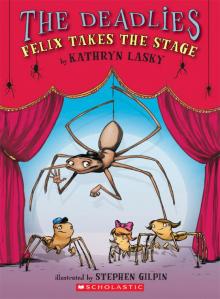 Felix Takes the Stage
Felix Takes the Stage Lucy
Lucy Lone Wolf
Lone Wolf Broken Song
Broken Song The Shattering
The Shattering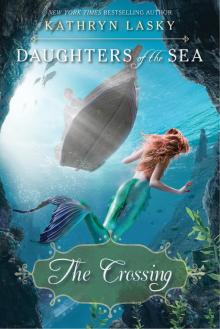 The Crossing
The Crossing May
May Chasing Orion
Chasing Orion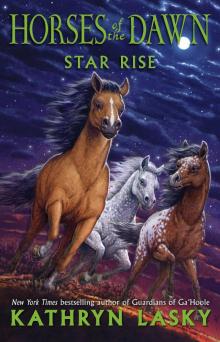 Star Rise
Star Rise The River of Wind
The River of Wind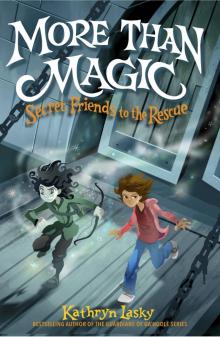 More Than Magic
More Than Magic Born to Rule
Born to Rule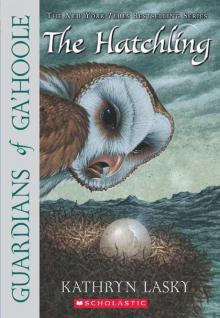 The Hatchling
The Hatchling The Rescue
The Rescue Marie Antoinette: Princess of Versailles, Austria - France, 1769
Marie Antoinette: Princess of Versailles, Austria - France, 1769 The War of the Ember
The War of the Ember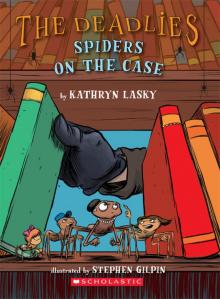 Spiders on the Case
Spiders on the Case To Be a King
To Be a King The Last Girls of Pompeii
The Last Girls of Pompeii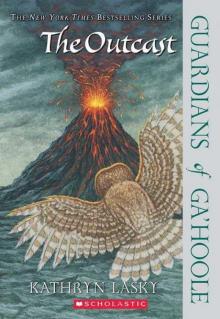 The Outcast
The Outcast Exile
Exile Night Witches
Night Witches Spirit Wolf
Spirit Wolf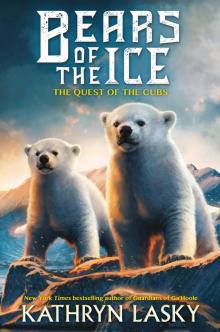 The Quest of the Cubs
The Quest of the Cubs Frost Wolf
Frost Wolf The Keepers of the Keys
The Keepers of the Keys The Extra
The Extra Blood Secret
Blood Secret Watch Wolf
Watch Wolf Blazing West, the Journal of Augustus Pelletier, the Lewis and Clark Expedition
Blazing West, the Journal of Augustus Pelletier, the Lewis and Clark Expedition The Capture
The Capture The Burning
The Burning The Journey
The Journey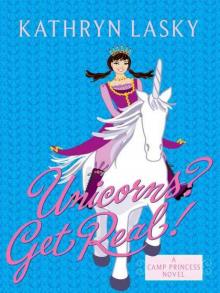 Unicorns? Get Real!
Unicorns? Get Real!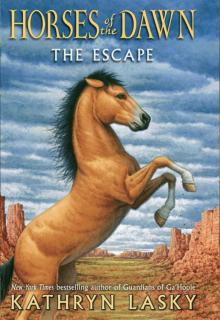 The Escape
The Escape Star Wolf
Star Wolf Ashes
Ashes Wild Blood
Wild Blood Tangled in Time 2
Tangled in Time 2 The Siege
The Siege Hannah
Hannah Elizabeth
Elizabeth A Journey to the New World
A Journey to the New World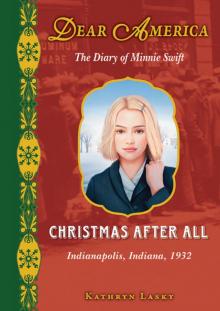 Christmas After All
Christmas After All Mary Queen of Scots
Mary Queen of Scots